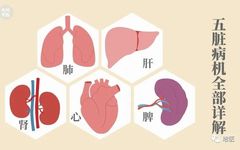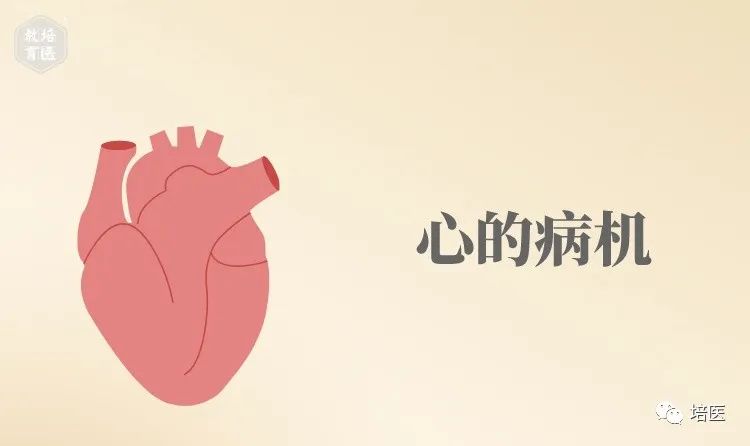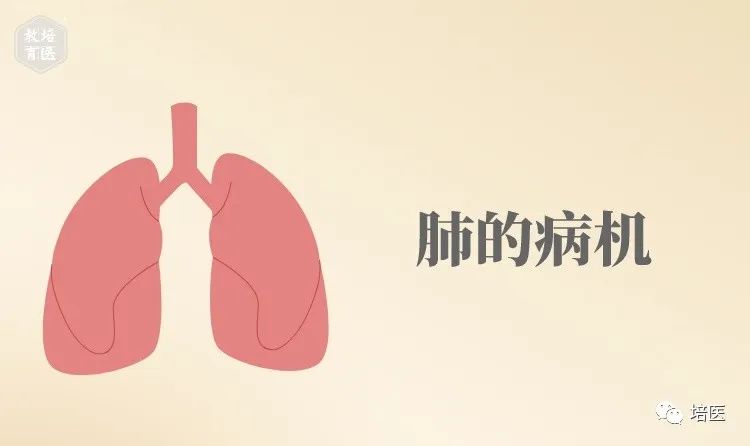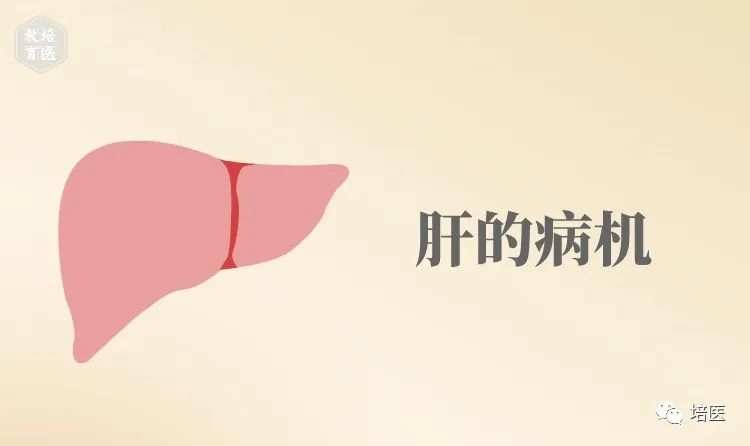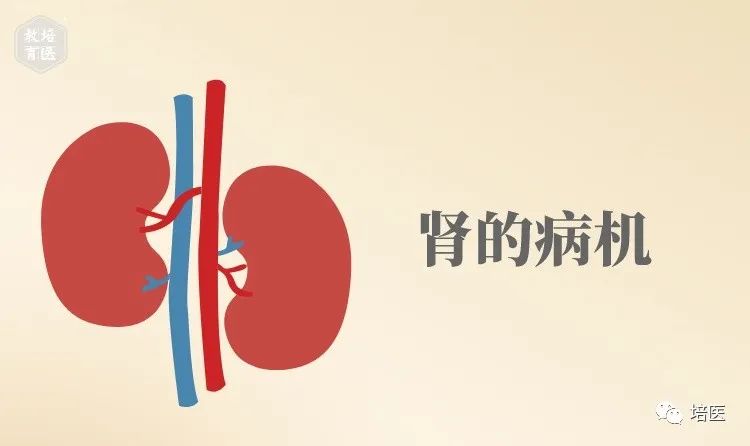
Detailed Explanation of the Pathogenesis of the Five Organs

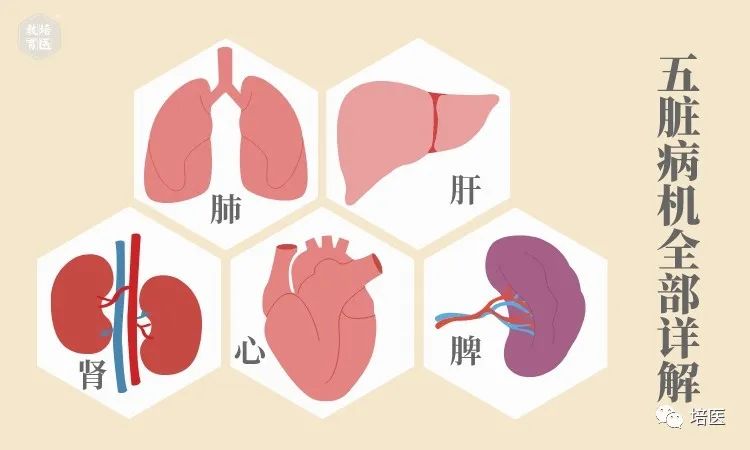
Concept of the Pathogenesis of the Five Organs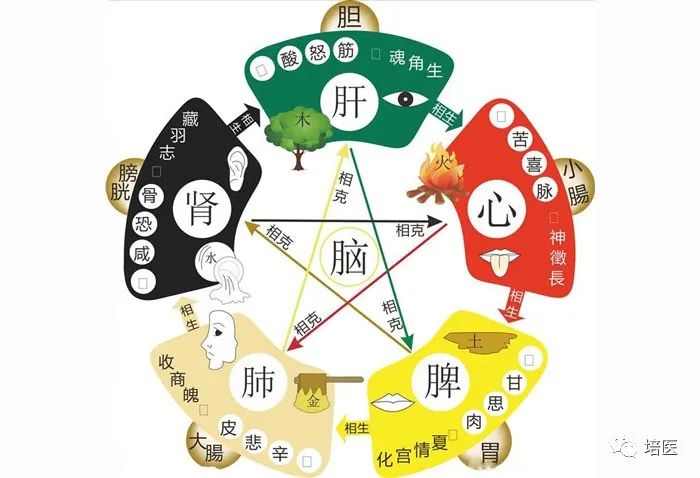
The pathogenesis of the five organs refers to the pathological state arising from the imbalance of qi, blood, yin, and yang in the five organs. Each organ has its own physiological characteristics, thus the pathological changes resulting from the imbalance of yin and yang also differ.
The yin, yang, qi, and blood of the five organs are important components of the body’s overall yin, yang, qi, and blood. The relationship between the yin, yang, qi, and blood of each organ is as follows: qi belongs to yang, blood belongs to yin; both qi and yang have the functions of warming and promoting the physiological activities of the organs, hence yang and qi are collectively referred to as “yang qi”; blood and yin have the functions of nourishing and calming the organ tissues and mental states, hence yin and blood are collectively referred to as “yin blood”. However, in terms of the relationship between yin, yang, qi, blood, and the physiological activities of the organs, yang and qi, yin and blood cannot be completely equated. Generally speaking, the yin and yang of the organs represent the functional state of the physiological activities of each organ, whether they are excited or inhibited, whether they are rising or descending, or whether they are dispersing or storing. The qi and blood of the organs are the material basis for the physiological activities of each organ. Qi not only has the function of promoting and warming the physiological activities of each organ but also has an important role in stabilization.
The yin and yang of each organ are fundamentally based on kidney yin and yang; therefore, any imbalance in the yin and yang of the organs will eventually affect the kidneys. The qi and blood of each organ are also derived from the essence of food and water; thus, the deficiency of qi and blood in each organ is closely related to the source of qi and blood generated by the spleen and stomach. Due to the unique physiological functions of each organ, the pathological changes resulting from the imbalance of yin and yang and qi and blood are not entirely the same.
Humans have five organs corresponding to the five elements: the heart belongs to fire, the liver belongs to wood, the spleen belongs to earth, the lungs belong to metal, and the kidneys belong to water.
The five elements generate each other: metal generates water, water generates wood, wood generates fire, fire generates earth, earth generates metal.The five elements restrain each other: metal restrains wood, wood restrains earth, earth restrains water, water restrains fire, fire restrains metal.
1. Physiological and Pathological Characteristics of the Heart:The heart is located in the upper jiao, opens to the tongue, connects with the vessels, its manifestation is on the face, and it is interrelated with the small intestine.The heart houses the spirit and is the main organ of the five organs and six bowels, also governing blood and externally connecting with the vessels throughout the body. When the yin and yang of the heart are balanced and qi and blood are sufficient, the spirit of the heart is vigorous, qi and blood circulate throughout the body, nourishing the five organs and six bowels, and irrigating the limbs and nine orifices, thus maintaining normal life activities. The pericardium serves as the outer defense of the heart, protecting it and warding off external pathogens. The heart is an important internal organ, known as the “ruler’s organ”.The main physiological functions of the heart are to govern the spirit and the blood vessels. Therefore, any pathological changes in the heart can lead to abnormalities in blood circulation and changes in mental states. These pathological changes are the result of the imbalance of the heart’s yin, yang, qi, and blood. Thus, the imbalance of the heart’s yin, yang, qi, and blood is the internal basis for cardiac diseases.2. Basic Pathological Changes of the Heart:Due to the different roles of yin and yang, qi and blood in the physiological functions of the heart, the imbalance of the heart’s yin, yang, qi, and blood can lead to different pathological changes based on deficiency, excess, cold, and heat.(1) Imbalance of Heart Qi and Heart Yang: The imbalance of heart qi and heart yang mainly manifests as two aspects: deficiency of yang qi and excess of yang qi.① Deficiency of Heart Yang: This mainly manifests as deficiency of heart qi and deficiency of heart yang.Heart qi deficiency: Heart qi deficiency is often caused by prolonged illness, aging, excessive sweating, or congenital insufficiency. Since heart qi is the driving force for blood circulation, insufficient heart qi leads to a decline in the heart’s function to govern blood vessels. As blood is the material basis for the spirit, when heart qi is deficient, the driving force is weak, blood circulation is insufficient, leading to insufficient nourishment of the spirit, thus presenting symptoms of both insufficient spirit and general qi deficiency. Clinically, this is characterized by palpitations, shortness of breath, and fatigue.Heart Yang deficiency: Heart yang deficiency often develops from severe heart qi deficiency; it can also be caused by cold dampness, phlegm, or emotional distress damaging heart yang; or due to chronic illness leading to insufficient nourishment. Yang deficiency leads to internal cold, qi deficiency leads to weak blood circulation, and insufficient nourishment of the spirit. Therefore, the basic pathological changes of heart yang deficiency mainly manifest as insufficient spirit, excess of yin, and blood circulation obstruction.Firstly, insufficient spirit. The physiological function of the heart governing the spirit loses the stimulation and excitement of yang qi, leading to weakened mental activity, reduced awareness, and sluggish thinking. Clinically, this can be seen as mental fatigue, sluggishness, slow response, excessive sleep, and low voice.Secondly, excess of yin. Yang deficiency leads to cold; insufficient heart yang reduces warming function, thus clinical manifestations may include aversion to cold, preference for warmth, and cold extremities.Thirdly, blood circulation obstruction. Blood flows when warmed and coagulates when cold. Insufficient heart yang leads to reduced function of governing blood vessels, resulting in blood stasis, and potentially leading to obstruction of the heart vessels, presenting symptoms such as cold limbs, pale or cyanotic complexion, chest tightness, stabbing pain, and a pulse that is choppy or intermittent.If heart yang deficiency is severe, or if cold pathogens violently damage yang qi, or if phlegm and blood stasis obstruct the heart orifices, it can lead to a collapse of heart yang, resulting in profuse sweating, cold extremities, confusion, and a pulse that is weak and almost absent.② Excess of Heart Yang: This mainly manifests as excessive heart fire and phlegm-fire disturbing the heart.Excessive heart fire: Excessive heart fire, also known as heart fire, refers to the excessive yang qi of the heart. Internal invasion of heat pathogens, emotional heat, excessive consumption of spicy and warming foods, or dysfunction of the organs can lead to excessive heart fire. The main pathological changes of excessive heart fire are:Firstly, fire disturbing the spirit. Fire qi connects to the heart; when heart fire is internally blazing, it disturbs the spirit, leading to symptoms such as irritability, insomnia, and even mania or confusion.Secondly, abnormal blood circulation. The heart governs blood vessels; heat forces blood to rise, and excessive heart fire leads to rapid blood flow, presenting symptoms such as palpitations, flushed face, red tongue, and a rapid pulse, and even leading to various bleeding disorders.Thirdly, heart fire rising and descending. Fire tends to rise; the heart opens to the tongue, and heart fire can rise along the meridians, leading to symptoms such as red and painful tongue tips and mouth sores. If heart fire descends to the small intestine, it can lead to symptoms such as yellow and red urine, hematuria, and burning pain during urination.Fourthly, significant heat symptoms. Excessive yang leads to heat; excessive heart fire often presents with symptoms of excess heat, such as fever, thirst, and constipation.Phlegm-fire disturbing the heart: Liver qi stagnation can transform into fire, leading to liver fire stirring heart fire, resulting in a condition of phlegm-fire disturbing the heart, primarily characterized by mental confusion.(2) Imbalance of Heart Blood and Heart Yin: The imbalance of heart blood and heart yin primarily manifests as heart blood deficiency, heart yin deficiency, and blood stasis.① Heart blood deficiency: Heart blood deficiency is often caused by blood loss, insufficient blood production, emotional distress, or excessive consumption of heart blood. The basic pathological changes of heart blood deficiency are:Firstly, insufficient blood volume. Insufficient heart blood leads to empty blood vessels, and blood governs nourishment, thus presenting symptoms of general blood deficiency, such as pale face, lips, and tongue, and a thin and weak pulse.Secondly, loss of spirit. Blood deficiency leads to insufficient nourishment of the heart, resulting in palpitations and anxiety; the spirit cannot settle, leading to weakened mental focus, and potentially insomnia, vivid dreams, and anxiety.② Heart Yin deficiency: Heart yin deficiency refers to the deficiency of heart yin. It is often caused by excessive mental strain, prolonged illness, or emotional distress damaging heart yin; or excessive heart fire damaging heart yin. The basic pathological changes of heart yin deficiency include:Firstly, internal heat. Yin fluid deficiency cannot restrain yang, leading to internal heat. Symptoms may include five hearts feeling hot, tidal fever, night sweats, thirst, and a red tongue with a thin pulse.Secondly, unsettled spirit. Heart yin deficiency leads to an inability to restrain heart yang, resulting in excessive heart yang, internal heat disturbing the spirit, leading to symptoms such as restlessness and insomnia.Thirdly, accelerated blood flow. Internal heat forces blood to flow rapidly, leading to a thin and rapid pulse.From a pathological perspective, although heart blood deficiency and heart yin deficiency both fall under the category of insufficient yin and blood, heart blood deficiency is purely a lack of blood, leading to insufficient nourishment of the heart, primarily manifesting as abnormal spirit and insufficient blood flow; while heart yin deficiency includes heart blood deficiency and primarily manifests as an inability of yin to restrain yang, leading to excessive heart yang and internal heat.③ Blood stasis in the heart: Cold stagnation in the heart or phlegm accumulation can lead to blood stasis in the heart. Emotional stress or cold can trigger or exacerbate this condition.When the qi and blood circulation in the heart is obstructed, it can lead to symptoms such as palpitations, anxiety, chest tightness, and severe pain.In summary, the heart governs blood vessels and houses the spirit, its manifestation is on the face, it opens to the tongue, and its meridian is the hand shaoyin meridian, which is interrelated with the small intestine. The functional connections of the heart system mean that the pathological changes of the heart are the pathological responses of this system at various levels, primarily reflected in the blood vessels and spirit.In terms of blood vessels, cold leads to blood stagnation, causing chest tightness and pain, and cold extremities; heat leads to erratic blood flow, causing a flushed complexion and bleeding; deficiency leads to weak circulation, causing a thin or choppy pulse; excess leads to poor circulation, causing blood stasis and obstruction.In terms of the spirit, cold leads to insufficient spirit, causing a calm demeanor and lethargy, and potentially leading to a collapse of yang qi and confusion; heat leads to loss of spirit, causing irritability and insomnia, and even mania; deficiency leads to fatigue and low energy; excess leads to erratic emotions, excessive joy, and uncontrollable sadness, or mania. Sweat is the fluid of the heart; excessive sweating can lead to loss of heart yang, while excessive heart fire can lead to a red and painful tongue, and heart fire descending to the small intestine can lead to red, painful urination.3. Relationship of Heart Disease with Other Organs:The relationship of heart disease with other organs primarily includes the pathological interactions between the heart and the lungs, spleen, liver, kidneys, and small intestine.(1) Heart and Lungs: The heart and lungs reside in the upper jiao; heart qi ascends to the lungs, and the lungs govern the regulation of qi and assist the heart in circulating blood. Therefore, the pathological interactions between the heart and lungs primarily manifest in the dysfunction of qi and blood.① Lung qi deficiency leads to insufficient zong qi, which cannot assist the heart in circulating blood, resulting in weakened heart qi. When heart qi is weak, heart blood cannot nourish the lungs, leading to lung qi deficiency. The mutual influence of qi deficiency between the heart and lungs ultimately leads to heart-lung qi deficiency, clinically presenting as palpitations, shortness of breath, cough, and wheezing, especially during exertion, with a low voice, chest tightness, and clear phlegm.② Lung qi deficiency or failure of lung regulation can affect the heart’s function of governing blood vessels, leading to sluggish blood circulation, resulting in chest tightness, shortness of breath, and symptoms of heart blood stasis such as cyanosis of the lips and purple tongue.③ Insufficient heart qi or heart yang deficiency can lead to poor blood circulation, which can also affect the lung’s function of descending qi, leading to symptoms such as chest tightness, stabbing pain, cough, and wheezing.④ Excessive heart fire can damage lung yin, leading to symptoms of heart palpitations, irritability, and insomnia, as well as cough and hemoptysis due to lung damage.⑤ In the development of warm diseases, the transmission of the disease can directly enter the heart from the lung wei stage, known as “reverse transmission to the heart.” Clinically, this is initially seen as fever, slight aversion to cold, and cough, followed by high fever, confusion, and a red tongue.(2) Heart and Spleen: The heart governs blood, while the spleen generates and regulates blood; thus, the pathological interactions between the heart and spleen primarily manifest in blood generation and circulation.Heart yang deficiency or heart blood deficiency can affect spleen function, leading to dysfunction. Conversely, spleen deficiency can lead to insufficient qi and blood generation, which can also affect the heart:① Spleen disease affecting the heart: Spleen qi deficiency leads to insufficient blood generation; or spleen dysfunction can lead to excessive blood loss, both of which can affect the heart, leading to heart blood deficiency. Clinically, this presents with symptoms of spleen qi deficiency such as pale complexion, fatigue, poor appetite, and loose stools, along with symptoms of heart blood deficiency such as palpitations, insomnia, forgetfulness, and a thin pulse.② Heart disease affecting the spleen: The heart circulates blood to nourish the spleen; if excessive thinking damages heart blood, the blood cannot nourish the spleen, affecting its function. Clinically, this presents with symptoms of heart blood deficiency and spleen qi deficiency.Whether spleen qi deficiency leads to heart blood deficiency or heart qi deficiency and blood loss affect spleen function, the heart and spleen mutually influence each other, ultimately leading to a syndrome of both heart and spleen deficiency. Clinically, this presents as symptoms of spleen qi deficiency such as poor appetite and abdominal distension, heart blood deficiency leading to palpitations, and insufficient nourishment of the spirit leading to insomnia, vivid dreams, and general qi and blood deficiency leading to dizziness, pale complexion, and fatigue.Additionally, the heart governs blood circulation, and the spleen has the function of regulating blood; under the influence of both the heart and spleen, blood circulates normally along the vessels without overflowing. When the functions of the heart and spleen are abnormal, bleeding disorders can occur.(3) Heart and Liver: The heart governs blood, while the liver stores blood; the heart governs the spirit, while the liver governs the regulation of qi. Therefore, the pathological influence between the heart and liver primarily manifests in blood and spirit:① Blood aspect: Insufficient heart and liver yin blood often mutually influence each other; heart blood deficiency can lead to liver blood deficiency. Conversely, liver blood deficiency can lead to heart blood weakness. Therefore, clinically, symptoms of heart blood deficiency such as palpitations, pale complexion, and a thin pulse often accompany symptoms of liver blood deficiency such as dizziness, brittle nails, numbness, and reduced vision, as well as scanty menstruation in women.Thus, blood deficiency syndrome often presents with both heart and spleen deficiency, as well as heart and liver blood deficiency: the syndrome of heart and liver blood deficiency presents with symptoms of heart blood deficiency and liver blood deficiency.② Spirit aspect: Diseases of both the heart and liver often manifest as mental abnormalities: for example, heart and liver blood deficiency leads to insufficient nourishment of the heart, and liver blood deficiency leads to symptoms of restlessness, insomnia, and vivid dreams. If heart yin is insufficient, leading to internal heat, symptoms such as palpitations, irritability, insomnia, and vivid dreams may also be accompanied by symptoms of irritability, dizziness, and flushed face, which is the result of the lack of restraint of heart and liver yin blood.In summary, in certain mental and emotional disorders, the mutual influence of the heart and liver can lead to abnormal changes in the spirit. Conversely, emotional disturbances can also lead to liver qi stagnation, and even liver qi fire rising.(4) Heart and Kidneys: The relationship between the heart and kidneys primarily involves the balance of water and fire. The imbalance of yin and yang, water and fire, and qi and blood between the heart and kidneys leads to the condition known as “heart-kidney disharmony.” The main pathological manifestations are kidney water deficiency and heart fire excess, as well as heart and kidney yang deficiency.① Kidney yin deficiency leads to excessive heart yang: Insufficient kidney water cannot support heart yin, leading to an inability of heart yin to restrain heart yang, resulting in excessive heart yang and kidney yin deficiency, presenting symptoms such as palpitations, irritability, insomnia, vivid dreams, and weakness in the lower back and knees, as well as nocturnal emissions in men and dream-related sexual activity in women. This is known as “heart-kidney disharmony” or “water-fire disharmony.”② Heart and kidney yin deficiency leads to excessive heart fire: Heart and kidney yin deficiency cannot restrain heart yang, leading to excessive heart fire, presenting symptoms such as five hearts feeling hot, weight loss, dry mouth, and sores in the mouth, as well as palpitations, insomnia, and forgetfulness.③ Heart yang deficiency leads to water qi obstructing the heart: Heart yang deficiency cannot warm the kidneys, leading to cold water not transforming, obstructing heart yang, presenting symptoms such as palpitations, edema, and cough.Additionally, the mutual influence of heart blood deficiency and kidney essence deficiency leads to a cycle of deficiency, resulting in dizziness, tinnitus, insomnia, vivid dreams, and weakness in the lower back and knees. This also reflects the physiological dysfunction between the heart and kidneys.(5) Heart and Small Intestine: The heart and small intestine are interrelated, thus their pathological interactions can be observed. The heart can transfer heat to the small intestine, while excessive heat in the small intestine can also affect the heart.① Heart heat transferring to the small intestine: Excessive heart fire can lead to symptoms such as irritability, mouth sores, and red and painful tongue tips. If heart fire descends, it can affect the small intestine’s ability to separate clear from turbid, leading to symptoms such as yellow and red urine, burning pain during urination, and even hematuria, known as “heart heat transferring to the small intestine” or “small intestine heat,” which can be treated by clearing the heart and promoting urination.② Small intestine heat rising to the heart: Heat in the small intestine can also rise to the heart, leading to symptoms such as irritability, red tongue, and mouth sores. In treatment, both clearing the heart and promoting urination should be used.
1. Physiological and Pathological Characteristics of the Lungs:The lungs reside in the chest, serving as the canopy of the five organs and six bowels, connecting to the airways and throat, and opening to the nose, collectively known as the lung system. The lungs are interrelated with the large intestine. The lungs govern qi and are responsible for respiration, serving as the site for gas exchange between the body and the environment. The lungs assist the heart in circulating blood and regulate water pathways, serving as the upper source of water. They also connect with the skin and nourish the muscles. The lungs are delicate organs, intolerant to cold and heat, preferring clarity and dryness. Their qi descends smoothly; thus, external pathogens often first invade the lungs. Therefore, the pathological changes of the lungs primarily manifest as respiratory dysfunction, water metabolism disorders, impaired surface barrier function, and disturbances in qi generation and blood circulation, as well as certain skin diseases.2. Basic Pathological Changes of the Lungs:Lung diseases can be classified into deficiency and excess; deficiency is often due to qi deficiency and insufficient yin fluid, while excess is often caused by invasion of wind, cold, dryness, heat, or phlegm-dampness.(1) Lung failure to disperse and descend: The lung’s dispersing and descending functions are two aspects of lung qi movement. Although they are distinct, they mutually influence each other; both dispersing and descending are necessary for normal lung function. Lung qi failure to disperse and descend is often caused by external pathogens invading the surface, internal phlegm obstructing lung channels, or excessive liver qi rising, leading to lung qi stagnation.① Lung qi not dispersing: Lung qi not dispersing refers to the failure of lung qi to circulate. This can lead to the following pathological changes:Impaired respiration: Normal lung dispersing and descending functions ensure smooth breathing. When lung qi fails to disperse, qi movement is obstructed, leading to symptoms such as nasal congestion and cough.Stagnation of defensive qi: The lungs connect with the skin and govern the dispersal of defensive qi to the skin. When the lungs fail to disperse, defensive qi stagnates, leading to tight pores and symptoms such as aversion to cold, fever, and absence of sweating.Lung qi not dispersing is generally more related to external pathogens, while lung qi stagnation is more related to internal injuries.② Lung failure to clear and descend: Lung failure to clear and descend refers to the lung’s inability to descend and clear the respiratory tract. Clinically, this presents as chest tightness, shortness of breath, cough, and excessive phlegm. Prolonged coughing can damage lung qi, leading to further lung qi rising. Lung qi rising is similar to lung failure to clear and descend, but cough and qi rising are more pronounced.Both lung qi not dispersing and lung failure to clear and descend can lead to lung qi rising, causing shortness of breath, and impairing the function of water pathways, leading to symptoms such as reduced urination and edema. Further development can also damage lung qi and lung yin, leading to lung qi deficiency or lung yin deficiency.(2) Lung qi deficiency: Lung qi deficiency, also known as lung qi weakness, is often caused by prolonged lung failure to disperse, chronic illness, or excessive strain, leading to lung qi depletion. In addition to the general changes associated with qi deficiency, lung qi deficiency primarily presents with the following pathological changes:① Impaired respiratory function: Lung qi deficiency leads to insufficient gas exchange, resulting in symptoms such as cough, shortness of breath, low voice, and even severe shortness of breath and difficulty breathing.② Accumulation of water: The lungs govern water and serve as the upper source of water. Lung qi deficiency cannot regulate water pathways, leading to impaired water metabolism, resulting in clear phlegm accumulation or even edema.③ Weak defensive yang: Lung qi deficiency leads to insufficient defensive qi, resulting in weak surface function, leading to spontaneous sweating and aversion to cold.(3) Lung yin deficiency: Lung yin deficiency refers to the deficiency of lung yin fluid and the pathological changes of excessive internal heat. This is often caused by heat pathogens burning the lungs, internal phlegm-heat damaging the lungs, excessive emotional strain leading to internal heat, or prolonged coughing damaging lung yin. Yin fluid deficiency leads to dryness in the lungs, impaired qi movement, or internal heat arising from yin deficiency, leading to symptoms such as dry cough with little phlegm, shortness of breath, tidal fever, night sweats, flushed face, and even blood-streaked phlegm. Prolonged lung yin deficiency can also damage the kidneys, leading to lung-kidney yin deficiency.The lungs are the gateway for qi movement, governing respiration and participating in water metabolism regulation. The lungs are closely connected to the external environment and are easily affected by external pathogens. Generally, the pathological changes of the lungs can be classified into excess and deficiency; excess may manifest as heat obstruction, phlegm obstruction, water accumulation, or blood stasis; deficiency may manifest as qi deficiency, yin deficiency, or both qi and yin deficiency. Lung deficiency often arises from the transformation of excess conditions, and there may also be mixed excess and deficiency symptoms.3. Relationship of Lung Disease with Other Organs:The pathological influence of the lungs on the heart has been previously discussed; here we will only discuss the pathological transmission between the lungs and the spleen, liver, kidneys, and large intestine.(1) Lung and Spleen: The lungs govern qi, while the spleen benefits qi; the lungs govern water, while the spleen governs the transformation of water and dampness. Therefore, the pathological relationship between the lungs and spleen primarily manifests in the abnormal functions of qi and water metabolism.① Insufficient qi generation: Spleen qi deficiency leads to insufficient transformation of water and food, resulting in lung qi weakness, presenting symptoms such as poor appetite, loose stools, abdominal distension, low energy, and cough with excessive phlegm, and even edema.Conversely, prolonged cough can lead to lung failure to disperse, affecting the spleen, leading to insufficient nourishment of the spleen, resulting in lung qi deficiency and symptoms such as cough, shortness of breath, fatigue, and weight loss.Thus, lung qi deficiency often requires spleen tonification to restore lung qi.② Water metabolism disorders: Spleen dysfunction leads to water not being transformed into fluids, leading to internal dampness, which can accumulate in the lungs, causing cough, wheezing, and phlegm. The manifestation of water metabolism is marked by the lungs and rooted in the spleen. The movement of phlegm is primarily governed by the spleen, while its storage occurs in the lungs; thus, treatment should focus on strengthening the spleen, drying dampness, and clearing phlegm. Conversely, lung qi weakness can lead to impaired water pathways, resulting in water retention, fatigue, abdominal distension, and loose stools.(2) Lung and Liver: The lungs govern qi, while the liver governs regulation; thus, the relationship between the lungs and liver is crucial for the movement of qi in the body. The pathological influence primarily manifests in the abnormal movement of qi.① Abnormal movement of qi: Liver qi stagnation can lead to heat, which can damage the lungs, leading to symptoms such as rib pain, irritability, cough, and hemoptysis. Conversely, lung failure to clear and descend can lead to liver dysfunction, resulting in symptoms such as cough, chest pain, dizziness, and flushed face.② Impaired circulation of qi and blood: When the body’s qi movement is smooth, the circulation of qi and blood is unobstructed. If the lung and liver qi movement is dysfunctional, it can lead to qi stagnation and blood stasis.(3) Lung and Kidneys: The lungs govern qi, while the kidneys govern the root of qi; the lungs are the upper source of water, while the kidneys govern water. The lungs belong to metal, while the kidneys belong to water, thus they mutually generate each other. Therefore, the pathological relationship between the lungs and kidneys primarily manifests in respiratory abnormalities and water metabolism disorders.① Respiratory abnormalities: Insufficient kidney essence can lead to qi floating upwards, or lung qi deficiency can damage kidney qi, leading to symptoms such as cough, shortness of breath, and cold extremities.② Water metabolism disorders: Lung failure to clear and descend can affect the kidneys, leading to water retention and edema. If wind pathogens invade the lungs, lung qi cannot disperse, leading to water retention and symptoms such as fever, aversion to cold, and reduced urination.③ Yin fluid deficiency: The lungs and kidneys are mutually supportive. If lung yin is damaged, it can lead to kidney yin deficiency, and vice versa. This can lead to symptoms such as dry cough, hoarseness, tidal fever, night sweats, and weakness in the lower back and knees.(4) Lung and Large Intestine: The lungs and large intestine are interrelated; thus, their pathological interactions manifest as lung failure to clear and large intestine transmission dysfunction.① Lung failure to clear leads to obstruction in transmission: Excessive lung heat can damage fluids, leading to constipation, known as excess heat constipation. Lung qi deficiency can lead to weak transmission in the large intestine, resulting in constipation due to qi deficiency. If lung failure to clear leads to insufficient moisture in the intestines, it can also lead to constipation. In treatment, lung-clearing and lung-tonifying herbs can assist in relieving constipation.② Transmission dysfunction can lead to lung failure to clear: Dysfunction in the large intestine can lead to lung qi failure to clear. For example, if the large intestine is obstructed due to excessive heat, it can lead to lung failure to clear, resulting in symptoms such as chest tightness, cough, and difficulty breathing. In treatment, ensuring smooth bowel movements can alleviate lung symptoms.
1. Physiological and Pathological Characteristics of the Spleen:The spleen is located in the middle jiao, interrelated with the stomach, governing the muscles and limbs, opening to the mouth, and manifesting on the lips, while externally corresponding to the abdomen. The spleen governs transformation and transportation, serving as the foundation of postnatal life and the source of qi and blood generation, and it can also regulate blood circulation. The spleen governs the upward movement of clear qi and prefers dryness while disliking dampness. The pathological changes of the spleen primarily manifest as impaired transformation of food and water, blood generation and circulation disorders, and water metabolism disorders. Spleen qi deficiency is the fundamental pathological change of the spleen, but the spleen’s function of transforming dampness can lead to dampness accumulation, thus spleen deficiency and dampness accumulation are characteristic of spleen diseases.2. Basic Pathological Changes of the Spleen:The spleen is associated with the taiyin damp earth; its functions are primarily governed by the spleen’s yang qi. Therefore, the impairment of the spleen’s transformation function is mainly due to the deficiency of the spleen’s yang qi, leading to impaired upward movement and transformation. The spleen’s function of regulating blood is essentially a reflection of the spleen’s yang qi’s ability to stabilize.(1) Spleen yang (qi) imbalance: The imbalance of spleen yang primarily manifests as spleen qi deficiency, spleen yang deficiency, and obstruction by dampness.① Spleen qi deficiency: Spleen qi deficiency, also known as spleen qi weakness, occurs when the spleen and stomach are weak, leading to insufficient qi and middle qi deficiency. Factors such as irregular diet, excessive use of digestive medications, emotional disturbances, excessive thinking, congenital weakness, overexertion, or prolonged illness can damage spleen qi, leading to reduced transformation of food and water, and insufficient generation of qi and blood, resulting in spleen qi deficiency.The characteristics of spleen qi deficiency are primarily reflected in the decline of the spleen’s transformation function, leading to weakened digestive and absorption capabilities, insufficient distribution of food essence, and reduced generation of qi and blood, thus presenting as a chronic digestive absorption dysfunction. Spleen qi deficiency can lead to the following pathological changes:Firstly, impaired digestive and absorption function. Spleen qi deficiency leads to insufficient transformation, resulting in poor appetite, undigested food, abdominal distension, or mild edema, known as spleen dysfunction.Secondly, dual deficiency of qi and blood. Spleen dysfunction leads to insufficient transformation, presenting symptoms such as pale complexion, thin body, low energy, and fatigue.Thirdly, descent of middle qi. Spleen qi deficiency leads to insufficient upward movement, resulting in middle qi descent, known as qi descent. Spleen qi deficiency can lead to symptoms such as dizziness, fatigue, organ prolapse, frequent bowel movements, and difficulty in urination.Fourthly, spleen’s inability to regulate blood. Spleen qi deficiency cannot stabilize blood, leading to symptoms such as blood in stools, irregular menstruation, excessive menstrual bleeding, or various chronic bleeding phenomena, known as spleen’s inability to regulate blood. Clinically, this presents with symptoms of spleen deficiency, blood deficiency, and bleeding.② Spleen yang deficiency: Spleen yang deficiency, also known as spleen yang weakness, occurs when spleen qi deficiency further develops or when the fire of the mingmen is weak, leading to insufficient warmth of the spleen. The pathological characteristics include significant internal cold symptoms. Therefore, clinical manifestations include general symptoms of spleen dysfunction, slow digestion, cold limbs, abdominal pain, preference for warm food, and diarrhea with clear stools, or impaired transformation of dampness leading to internal accumulation of dampness, phlegm, or edema.Spleen yang deficiency, if prolonged, can easily affect the kidneys, leading to spleen-kidney yang deficiency.③ Spleen deficiency with dampness accumulation: Spleen disease primarily manifests as qi deficiency, while dampness accumulation is a secondary manifestation. The spleen governs the transformation of dampness; if the spleen is deficient, dampness cannot be transformed, leading to internal accumulation, which further affects the spleen’s function. The clinical characteristics include symptoms of spleen qi deficiency, abdominal distension, fatigue, reduced appetite, and a lack of thirst, as well as nausea, loose stools, and even edema, with a white and greasy tongue coating.When dampness accumulates in the spleen, it further obstructs the spleen’s transformation and transportation functions, leading to a tendency for dampness to transform into cold or heat. If the spleen yang is weak, it is more likely to transform into cold; if the spleen yang is strong, it may transform into heat, leading to symptoms of damp-heat in the spleen and stomach. However, dampness is a yin pathogen, and its nature is sticky; thus, when dampness is excessive, yang is weakened, leading to a primary pathological trend of dampness transforming into cold. In clinical practice, it is essential to distinguish between external dampness, internal dampness, and the relationship between the spleen to make accurate judgments about the pathogenesis.(2) Spleen yin imbalance: Spleen yin imbalance generally refers to the imbalance of spleen yin fluid, known as spleen yin deficiency. Spleen yin deficiency is often caused by irregular diet, excessive consumption of spicy and dry foods, alcohol abuse, or emotional distress leading to internal damage, resulting in excessive fire and depletion of spleen yin, or kidney water deficiency leading to insufficient nourishment of the spleen.Additionally, prolonged exposure to dampness, heat, or dryness can also lead to spleen yin deficiency. Spleen yin deficiency primarily presents with symptoms such as reduced appetite, dry lips, constipation, burning sensation in the stomach, weight loss, and a red tongue with little coating.The spleen and stomach reside in the middle jiao, connected by membranes, governing the transformation of food and water. The spleen governs transformation, while the stomach governs reception; they work together to complete the physiological activities of digestion and absorption. The spleen and stomach are both associated with the earth element, one being yin earth and the other being yang earth, thus they are closely related physiologically and pathologically. Therefore, spleen yin deficiency often coexists with stomach yin deficiency, while stomach yin deficiency often presents with symptoms of spleen yin deficiency. However, there are distinctions; spleen yin deficiency is often due to emotional distress, while stomach yin deficiency is often caused by heat diseases damaging fluids. The former often presents with taste disturbances, while the latter may present with hunger without appetite and dry retching.In summary, spleen qi deficiency is the most basic and common pathological change of the spleen, primarily characterized by impaired digestive and absorption functions, accompanied by systemic qi deficiency. Spleen yang deficiency often develops from spleen qi deficiency and can also be caused by excessive consumption of cold foods or cold medications, directly damaging spleen yang. Spleen yang deficiency not only presents with symptoms of spleen qi deficiency but also often manifests as reduced warming function, leading to internal cold. Spleen qi descent or middle qi descent is often due to insufficient spleen qi or spleen yang, leading to functional decline, resulting in symptoms of qi descent. Spleen’s inability to regulate blood is primarily due to spleen qi weakness, leading to symptoms of blood not being stabilized, thus presenting with various bleeding phenomena. Spleen yin deficiency is characterized by insufficient yin fluid, often coexisting with stomach yin deficiency.3. Relationship of Spleen Disease with Other Organs:The pathological influence of the spleen on the heart often presents as heart-spleen deficiency. The pathological influence of the spleen on the lungs often presents as lung-spleen deficiency, as previously mentioned. Here, we will primarily discuss the pathological transmission relationship between the spleen and the liver, kidneys, and stomach.(1) Spleen and Liver: The liver stores blood and governs regulation, while the spleen generates and regulates blood; thus, the relationship between the spleen and liver primarily involves regulation and transformation, with pathological manifestations in digestive absorption and blood function.① Digestive absorption: The relationship between the liver and spleen can manifest as two different pathological presentations: excessive wood affecting earth and earth obstructing wood. Excessive wood affecting earth includes liver-spleen disharmony and liver-stomach disharmony. The spleen and stomach’s digestive absorption relies on the liver’s regulation. When the liver fails to regulate, it can lead to spleen qi weakness and impaired transformation, known as liver-spleen disharmony. Clinically, this presents with symptoms such as chest and rib fullness, emotional depression, or irritability, along with symptoms of spleen dysfunction such as poor appetite, abdominal distension, and loose stools. Liver failure to regulate can also lead to stomach dysfunction, resulting in symptoms such as stomach pain and hiccups.Earth obstructing wood: Spleen dysfunction leads to internal dampness; external dampness can also obstruct spleen yang, leading to damp-heat accumulation. Damp-heat accumulation can impair liver and gallbladder function, leading to symptoms such as jaundice, yellowing of the skin and eyes, and dark urine. Additionally, spleen qi weakness can lead to liver dysfunction, potentially leading to wind, known as spleen deficiency leading to wind. For example, children with prolonged spleen deficiency can develop “chronic spleen wind,” characterized by convulsions. This is different from the mechanism of liver wood affecting spleen. Therefore, in treatment, the former should focus on soothing the liver and regulating the spleen, while the latter should focus on tonifying the spleen and soothing the liver.② Blood aspect: Spleen qi weakness leads to insufficient transformation, resulting in insufficient blood generation, or excessive blood loss, which can affect the liver, leading to liver blood deficiency, presenting symptoms such as poor appetite, weight loss, dizziness, blurred vision, numbness, and scanty menstruation or amenorrhea.(2) Spleen and Kidneys: The spleen is the foundation of postnatal life, while the kidneys are the foundation of prenatal life; thus, they mutually influence each other. Kidney yang deficiency can lead to insufficient warmth of the spleen, while prolonged spleen yang deficiency can also damage kidney yang, leading to both spleen and kidney yang deficiency. Clinically, this primarily manifests as digestive dysfunction and water metabolism disorders.① Digestive dysfunction: Spleen and kidney yang deficiency leads to insufficient transformation of food and water, resulting in diarrhea. Kidney yang deficiency can lead to insufficient warmth of the spleen, leading to symptoms such as five o’clock diarrhea. Therefore, it is said that “kidney deficiency leads to five o’clock diarrhea.” This is due to kidney yang deficiency, which cannot warm the spleen, leading to excessive cold and resulting in symptoms such as abdominal distension and diarrhea.② Water metabolism disorders: Spleen deficiency leads to insufficient regulation of water, leading to excessive dampness, which can damage kidney yang. Kidney yang deficiency can lead to insufficient warmth of the spleen, leading to symptoms such as water retention and edema.(3) Spleen and Stomach: The spleen and stomach are interrelated; thus, their pathological interactions manifest as impaired digestion and absorption, abnormal movement, and impaired moisture regulation.① Impaired digestion: The stomach governs reception, while the spleen governs transformation; thus, they work closely together to ensure normal digestive function. If the stomach cannot receive and digest food, it can lead to poor appetite or excessive hunger. If the spleen fails to function properly, it can lead to symptoms such as poor digestion, abdominal distension, and loose stools. The stomach governs reception, while the spleen governs digestion. If food cannot be digested, the spleen is at fault; if food cannot be received, the stomach is at fault. However, due to the interrelationship between the spleen and stomach, symptoms of impaired digestion often present simultaneously, requiring treatment to address both the spleen and stomach.② Abnormal movement: The spleen governs the upward movement of clear qi; if spleen qi does not rise, it can lead to symptoms such as diarrhea, prolapse, and organ descent. The stomach governs the downward movement of turbid qi; if stomach qi does not descend, it can lead to symptoms such as nausea, vomiting, hiccups, and difficulty in bowel movements. Since the spleen rises and the stomach descends, if clear qi does not rise, turbid qi will not descend, leading to a mutual influence of clear and turbid qi, resulting in various pathological changes. Treatment should focus on restoring the upward movement of the spleen and the downward movement of the stomach.③ Impaired moisture regulation: The spleen prefers dryness and dislikes dampness, while the stomach prefers moisture and dislikes dryness. If dampness obstructs the spleen, it can lead to symptoms of dampness accumulation; if the spleen fails to function properly, it can also lead to moisture accumulation. Therefore, spleen diseases often present with cold and dampness, requiring warming and drying treatments. Heat pathogens can damage fluids, leading to dryness; if stomach qi rises, frequent vomiting can lead to fluid loss. Therefore, stomach diseases often present with heat and dryness, requiring cooling and moistening treatments.In summary, the spleen and stomach work together to ensure the coordination of digestion and absorption of food and water. If the spleen and stomach fail to function properly, it can lead to various pathological changes.
1. Physiological and Pathological Characteristics of the Liver:The liver is the organ of wind and wood, governing regulation and storing blood. Its qi rises and prefers smoothness while disliking stagnation. The liver governs the tendons, opens to the eyes, and is interrelated with the gallbladder. The liver is characterized by blood as its essence and qi as its function, embodying the unity of yin and yang. Therefore, its pathological changes are complex and varied, often leading to liver qi stagnation, prolonged stagnation transforming into fire, excessive liver yang, and internal wind movement, among other changes. The liver’s yin and blood are often deficient, leading to the important pathological characteristics of the liver. The liver is known as the “thief of the five organs,” thus, in addition to its own diseases, it can also affect and influence other organs, leading to complex pathological changes.2. Basic Pathological Changes of the Liver:Liver diseases can be classified into deficiency and excess, with excess being more common.(1) Imbalance of Liver Qi and Liver Yang: Imbalance of liver qi and liver yang is often characterized by excess liver qi, liver fire, and excessive liver yang. Excessive liver yang is often caused by liver yin deficiency, leading to a rise in liver yang, thus it is discussed in the context of liver yin and liver blood imbalance.① Liver qi stagnation: Liver qi stagnation, also known as liver qi stagnation, is the most common pathological change in liver diseases. Emotional stress, unresolved emotional issues, or prolonged illness can lead to liver qi stagnation, characterized by symptoms such as emotional depression, irritability, and rib pain. The pathological characteristics of liver qi stagnation include impaired liver regulation, leading to qi stagnation, which can manifest in the body or organs. Clinically, this is characterized by emotional depression, unhappiness, and symptoms of qi stagnation, often relieved by sighing or belching.The pathological progression of liver qi stagnation includes:Firstly, qi stagnation leading to blood stasis. If qi stagnates, blood will also stagnate. Liver qi stagnation leads to blood flow obstruction, resulting in symptoms such as rib pain, abdominal masses, and a blue or purple tongue.Secondly, phlegm and qi stagnation. Qi stagnation can lead to phlegm accumulation, which can obstruct the throat, leading to symptoms such as globus sensation; if it accumulates in the neck, it can lead to goiter.Thirdly, qi stagnation transforming into fire. Excess qi can lead to fire; prolonged liver qi stagnation can transform into fire, leading to symptoms of liver fire rising.Fourthly, liver qi affecting the spleen and stomach. If liver qi stagnation is not resolved, it can lead to symptoms such as vomiting, belching, abdominal distension, and diarrhea.In summary, the basic pathological changes of liver qi stagnation primarily manifest in emotional depression and qi movement disorders.② Liver fire rising: Liver fire rising, also known as liver fire or liver heat, is a pathological change characterized by excessive yang heat in the liver, leading to symptoms such as headache, flushed face, irritability, and even bleeding. This is often caused by liver qi stagnation, which transforms into fire, or by emotional distress leading to excessive liver qi, resulting in liver fire rising.Liver fire rising is characterized by excessive yang qi rising, leading to symptoms such as headache, flushed face, irritability, and even bleeding. Excessive liver yang can also damage yin blood, leading to symptoms such as cough, hemoptysis, and even fainting.(2) Imbalance of Liver Yin and Liver Blood: The imbalance of liver yin and liver blood is characterized by insufficient liver yin and blood. Yin deficiency leads to yang excess, resulting in excessive liver yang and internal wind movement.① Liver yin deficiency: Liver yin deficiency, also known as liver yin deficiency, is characterized by symptoms such as dizziness, dry eyes, rib pain, flushed face, dry mouth, and five hearts feeling hot. This is often caused by kidney water deficiency, leading to insufficient nourishment of the liver.② Liver blood deficiency: Liver blood deficiency is often caused by excessive blood loss, prolonged illness, or spleen and stomach weakness, leading to insufficient blood generation. The pathological changes of liver blood deficiency primarily manifest as symptoms such as numbness, joint pain, and blurred vision, as well as menstrual irregularities in women.③ Excessive liver yang: Excessive liver yang is often caused by liver yin deficiency, leading to excessive liver yang. This can lead to symptoms such as dizziness, tinnitus, and irritability.In summary, the pathological changes of the liver are characterized by the interplay of qi, fire, and wind. Liver qi stagnation is characterized by impaired liver regulation, leading to qi stagnation. Prolonged liver qi stagnation can lead to liver fire, which can damage liver yin, leading to excessive liver yang. Excessive liver yang can lead to internal wind movement, resulting in symptoms such as dizziness and tremors.3. Relationship of Liver Disease with Other Organs:The liver is known as the “thief of the five organs,” thus liver diseases often extend beyond the liver itself, affecting other organs. The relationship between the liver and other organs can be complex, often leading to various pathological changes.(1) Liver and Heart: The relationship between the liver and heart often manifests as heart-liver fire, heart-liver blood deficiency. The liver and lungs often present as wood-fire affecting metal, while the liver and spleen often present as liver wood affecting spleen earth. Here, we will primarily discuss the pathological influence between the liver and kidneys and gallbladder.(2) Liver and Kidneys: The relationship between the liver and kidneys primarily involves the balance of yin and yang, essence and blood, and the regulation of storage and release. Kidney yin deficiency can lead to liver yin deficiency, resulting in symptoms such as dizziness, tinnitus, and weakness in the lower back and knees.(3) Liver and Gallbladder: The liver and gallbladder are interrelated; thus, their pathological interactions primarily manifest in the regulation of bile secretion and emotional disturbances. If liver function is impaired, it can lead to symptoms such as jaundice, while gallbladder dysfunction can lead to symptoms such as irritability and anxiety.
1. Physiological and Pathological Characteristics of the Kidneys:The kidneys are the organs of water and fire, storing true yin and housing true yang, serving as the foundation of prenatal life and the root of life. They govern essence, qi, and water, opening to the ears and the two lower orifices, manifesting in the hair, and interrelated with the bladder. Sufficient kidney essence leads to strong bones, firm teeth, abundant marrow, sharp brain function, clear hearing, and good vision. Sufficient mingmen fire leads to robust yang qi in the five organs and six bowels. Therefore, any abnormalities related to growth, reproductive function, water metabolism, and certain diseases of the brain, marrow, bones, and respiratory and urinary systems are often related to kidney dysfunction.The kidneys are the storage place for the body’s true yin and true yang, which are fundamental to human reproductive development. They should be kept hidden and not leaked. If they are preserved, normal physiological functions can be maintained; if depleted, it can lead to various diseases. Therefore, the pathological changes of the kidneys are primarily characterized by deficiency rather than excess.The kidneys contain both water and fire, yin and yang. When yin and yang are balanced, the kidneys function normally. Pathological changes primarily manifest as imbalances of water, fire, yin, and yang, with distinctions between deficiency and excess. Diseases caused by excess are often due to external cold and dampness, while diseases caused by deficiency are often due to internal weakness. Kidney deficiency can be classified into yin and yang deficiency, as well as essence and qi deficiency. However, prolonged deficiency can lead to both yin and yang deficiency.The kidneys are the root of yin and yang in the body. Kidney diseases are closely related to other organs. Prolonged diseases of the five organs can lead to kidney damage, while kidney diseases can also affect other organs.2. Basic Pathological Changes of the Kidneys:Kidney diseases are primarily characterized by deficiency, generally classified into yin deficiency and yang deficiency.(1) Imbalance of Kidney Yang and Kidney Qi: Imbalance of kidney yang and kidney qi primarily manifests as kidney yang deficiency, insufficient mingmen fire, and kidney qi weakness, leading to systemic physiological decline, impaired water metabolism, disordered spleen and stomach function, and reproductive dysfunction.① Kidney qi instability: Kidney qi instability, also known as lower source instability, is a pathological change characterized by kidney qi weakness and failure to stabilize. This is often caused by aging, congenital insufficiency, or prolonged illness leading to kidney qi depletion. Clinically, this presents as symptoms such as nocturnal emissions, urinary incontinence, and irregular menstruation.② Kidney not receiving qi: Kidney not receiving qi refers to the inability of kidney qi to stabilize lung qi. This is often caused by excessive strain on the kidneys or prolonged illness leading to qi deficiency. Clinically, this presents as symptoms such as shortness of breath, wheezing, and difficulty breathing.③ Kidney yang deficiency: Kidney yang deficiency, also known as kidney yang weakness, is often caused by factors such as aging, prolonged illness, or congenital weakness. The impact of kidney yang deficiency on physiological functions primarily manifests as reproductive dysfunction, leading to symptoms such as impotence, early ejaculation, and infertility in men, as well as coldness and infertility in women. Additionally, it can lead to water metabolism disorders, resulting in symptoms such as edema and frequent urination.(2) Imbalance of Kidney Yin and Kidney Essence: This primarily reflects kidney essence deficiency, kidney yin deficiency, and excessive fire movement:① Kidney essence deficiency: Kidney essence deficiency is often caused by congenital insufficiency, prolonged illness, or excessive sexual activity, leading to depletion of kidney essence. Kidney essence is crucial for reproductive and developmental functions, as well as blood generation. Therefore, kidney essence deficiency can lead to symptoms such as reproductive dysfunction, developmental delays in children, and early aging in adults.② Kidney yin deficiency: Kidney yin deficiency, also known as kidney water deficiency, refers to the deficiency of kidney yin fluid, often caused by excessive heat, blood loss, or emotional distress. Kidney yin deficiency can lead to symptoms such as weakness, dizziness, and insomnia.③ Excessive fire movement: Excessive fire movement refers to the pathological changes caused by excessive internal heat, leading to symptoms such as excessive sexual desire, early ejaculation, and irritability.In summary, the pathological changes of the kidneys are primarily characterized by deficiency rather than excess. Cold conditions are often associated with yang deficiency, while heat conditions are often associated with yin deficiency. Extreme deficiency can lead to mutual damage between yin and yang, resulting in both yin and yang deficiency.3. Relationship of Kidney Disease with Other Organs:The kidneys are the foundation of prenatal life, and kidney yin and yang are the roots of human yin and yang. Therefore, diseases of the five organs can lead to kidney damage, while kidney diseases can also easily affect all other organs.(1) Relationship between the Kidneys and Heart, Lungs, Spleen, and Liver: As previously mentioned, kidney yang deficiency is closely related to the heart, lungs, and spleen, presenting as heart-kidney yang deficiency, lung-kidney qi deficiency, and spleen-kidney yang deficiency. Conversely, kidney yin deficiency is closely related to the heart, lungs, and liver, presenting as heart-kidney yin deficiency, lung-kidney yin deficiency, and liver-kidney yin deficiency.(2) Relationship between the Kidneys and Bladder: The kidneys and bladder are connected through meridians. Kidney yang deficiency can lead to impaired qi transformation, resulting in urinary difficulties. If kidney deficiency leads to insufficient stabilization, it can lead to urinary incontinence or nocturnal emissions. Abnormalities in urine storage and excretion are primarily due to bladder diseases, such as bladder damp-heat leading to symptoms such as painful urination, hematuria, or urinary retention. Conversely, bladder qi deficiency can lead to urinary frequency and incontinence. However, the storage and excretion functions of the bladder depend on kidney qi transformation; thus, abnormalities in urination are related to both the bladder and kidney qi transformation. Clinically, excess conditions are often attributed to the bladder, while deficiency conditions are often attributed to the kidneys. For example, common urinary incontinence and frequent urination in the elderly are often due to kidney qi weakness.Further Reading
-
[Differentiation and Acupuncture Points] Detailed Explanation of Acupuncture Points for Differentiation of the Twelve Meridians and Organs
-
[Application of Acupuncture Points] The Combination of Back Shu Points of the Zang-Fu Organs by Jin Zhen Wang Leting, the Effects Are Remarkable
Recommended Column



 ○ Note: This article is organized by Peiyi Education (www.tcmedu.com), extracted from the internet. The various prescriptions and formulas mentioned are for reference and learning purposes only and should not be used as prescriptions. Please do not use them blindly; this platform does not bear any responsibility for any consequences arising from this!Scan the QR code after clicking the image
○ Note: This article is organized by Peiyi Education (www.tcmedu.com), extracted from the internet. The various prescriptions and formulas mentioned are for reference and learning purposes only and should not be used as prescriptions. Please do not use them blindly; this platform does not bear any responsibility for any consequences arising from this!Scan the QR code after clicking the image

Pei Xian Zhuo Xiu, Medicine to Benefit the World. Growing in Medicine, Walking Together.

